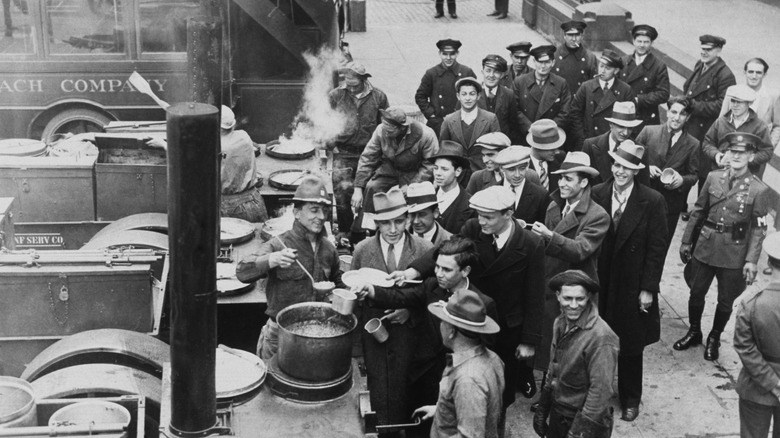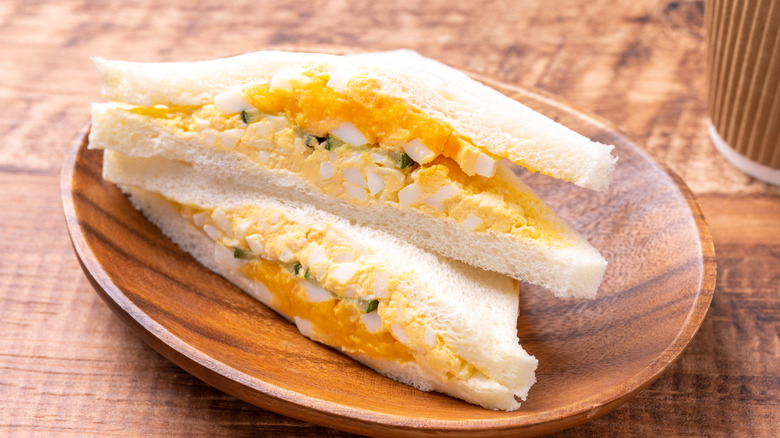This Depression-Era Sandwich Was Once Known As An Emergency Meal
Picture opening your cupboard in the 1930s and seeing ... not much. Meat was hard to come by, vegetables weren't always within reach, and every bit of food counted. While bread would have also been hard to secure for those facing extreme poverty, it still remained a staple during this period. From necessity and lack of consistent ingredients, the "emergency sandwich" was born, much like the Depression-era peanut butter sandwich found in school lunches.
On the YouTube channel Sandwiches of History, the host Barry demonstrates this recipe pulled from the cookbook "The Calendar of Sandwiches and Beverages of 1920." While it might not be the most appealing sandwich today, it was straightforward and frugal, featuring a mixture of chopped hard-boiled egg, butter, mustard, mayonnaise, stale cheese, and salt and pepper. If you were lucky to have fresh chives or a pickle, those would find their way in, too. The mixture got mashed together like an egg salad and spread onto two pieces of bread, most often white bread.
Butter and mayonnaise added richness to plain, bland bread, mustard was the acidity, eggs some valuable protein, and cheese, even when stale, had flavor. It was satisfying, cheap, and consisted of ingredients that did not spoil easily. According to Barry, the emergency sandwich he whipped up was quite salty (he also added capers), so keep this in mind if you make it at home.
The History of the Emergency Sandwich
While there is a recipe for the emergency sandwich featured in the aforementioned YouTube video, it's likely this recipe changed a lot, as families simply had to make do with what they could find. This quick meal became popular during the Great Depression, from 1929-1941, a time when food scarcity forced families to stretch ingredients as far as possible. By the early 1930s, unemployment had reached record highs around 25%, and with limited access to meat or fresh produce, people relied on pantry staples and whatever was already in the kitchen.
The emergency sandwich wasn't originally about taste, it was about survival and getting enough calories. However, in its own right, it became comfort food in times of uncertainty. The sandwich was not alone. The Great Depression introduced us to a whole category of so-called "make-do" meals: Hot water pie, mock apple pie, and even peanut butter-stuffed onions. But not all Depression-era recipes were so bad, with some more appealing creations coming out of this time period too, such as the Chicago Depression Dog and the 1920s icebox cake. They weren't created to be impressive culinary achievements, but to save money, stretch food, and fill bellies.

